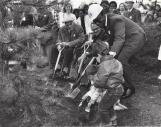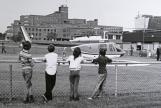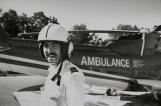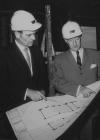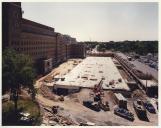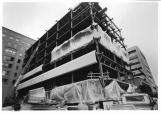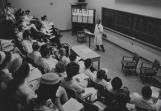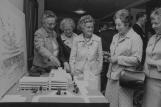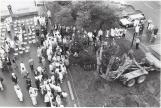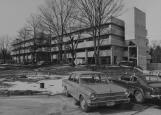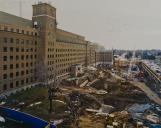1
By the early 1960's, with occupancy rates diminishing and 45 per cent of treatment beds occupied by chronic care patients, the federal government decided to transfer its veterans' facilities to non-federal agencies; preferably universities with medical schools. It was felt this would also help ease bed shortages in community hospitals.Negotiations, led by the University of Toronto's Chairman of the Governing Council, Dr. Henry Borden, resulted in the transfer of Sunnybrook lands and facilities from the Government of Canda to the university on October 1, 1966, for the token sum of one silver dollar. Since the will of Alice Kilgour stipulated that her heirs would control the lands known previously as Sunnybrook Farm, it was necessary to once again obtain permission for transfer. The Sunnybrook Act, a Provincial Act of Incorporation created at the same time, established the Sunnybrook Hospital Corporation to operate the facilities in perpetuity for the purposes of car, teaching and research. Budd H. Rieger was named Chariman of the first Board of Trustees.
The transfer involved many adjustments. Dr. Carl Aberhart, then Head of Surgery, was key in promoting th econcept of change. Unfortunately, he died several months before the transfer occurred.
The transfer agreement stipulated that Sunnybrook continue its commitment to veterans while opening its doors to the general public. The hospital's educational program expanded to include undergraduate medical training. Dr. J. Kempt Morrison, Superintendent of the hospital since 1962, became Executive Director.
On September 30, 1966, the eve of transfer, hospital staff faced the task of discharging (on paper) and immediately readmitting more than 1,000 patients. As the clock struck midnight, the hospital also theoretically lost its entire staff and had to rehire everyone back again. On October 1, 1966, the last group of nrusing sisters to wear the traditional military veil came to work in their new nursing caps - a sign that Sunnybrook was entering a new era.
From 1966 to 1970, Sunnybrook was in transition. Heated controversy occured over plans to build a new $100-million acute care facility, since capital development funds for teaching hosptials were limited. Many were of the opinion that the transfer had been a mistake; that Sunnybrook wasn't a priority for the University of Toronto, and that the government would not be able to afford to funds its renovation and operation. Some were concerned that Sunnybrook would be converted to a chronic hospital for veterans.
Two factors helped the university and the hospital to achieve their goals: a legal opinion that veterans were entitled to acute and long-term care at Sunnybrook; and the close bond that had developed among the board, management, physicians, staffa nd volunters, all of whome depended on one another to complete the transition.
8
Exerpt from an interview with Dr. Martin Barkin, Chair of the Board of Directors (1998-2003)2 April 1998
Toronto, Ontario, Canada
 Credits:
Credits:Dr. Martin Barkin
11
Rt. Hon. Lincoln Alexander, Lt. Governor, Province of Ontario, attends the Big Dig4 October 1985
Toronto, Ontario, Canada
